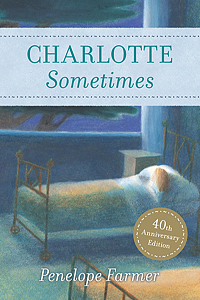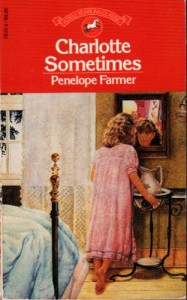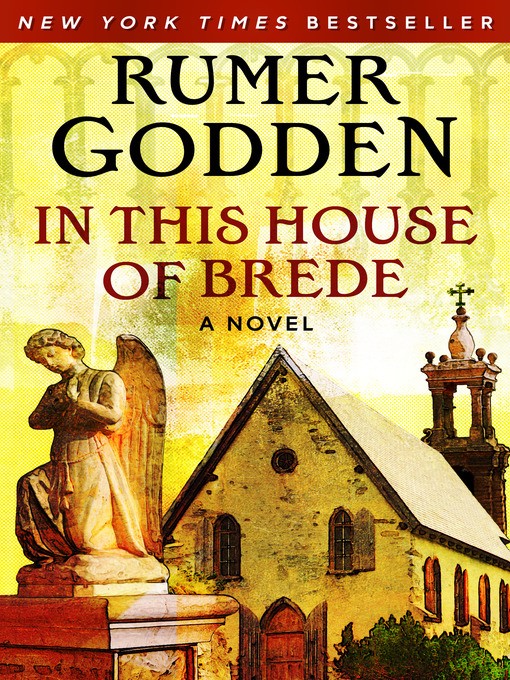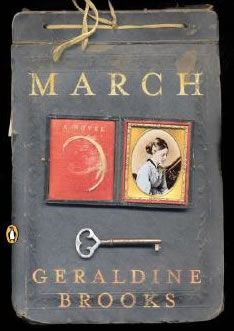Charlotte Sometimes
 This haunting novel is classified as a children’s book, though to my mind it seems more like an adult book with child characters. Although it’s poetic and truthful in its depiction of character and psychology, its storyline is intriguing, and for many it’s considered a modern classic, it’s not a book I recommend.
This haunting novel is classified as a children’s book, though to my mind it seems more like an adult book with child characters. Although it’s poetic and truthful in its depiction of character and psychology, its storyline is intriguing, and for many it’s considered a modern classic, it’s not a book I recommend.
First, the details. Charlotte Sometimes is a time-travel story with a twist, originally published in 1969. 13-year-old Charlotte Makepeace goes to boarding school and sleeps in a unique bed with wheels. Though it’s never explained how or why, the bed facilitates an exchange with Clare Moby, a girl sleeping in the same bed 50 years earlier in 1918. Every other day, the girls find themselves trading places. They start to keep a diary whereby they communicate essential details to make the transitions easier. Then they find themselves trapped in the wrong times. How will they get back where they belong?
The story is told through Charlotte’s perspective, and the loss of identity she feels is quite delicately and compellingly drawn. When she finds herself transported back to 1918, she “becomes” Clare, and pervading the novel is her sense of wondering what makes her uniquely “her.” Clare has a sister, Emily, at the boarding school, and even she doesn’t catch on right away to the fact that her sister has become someone else. The ordinary, and our expectations and assumptions, exert a tremendous power over what we perceive, the novel suggests. Sometimes they cloak reality. And sometimes they isolate and alienate.
The World War I historical context is deftly drawn in realistic detail. We are immersed in the experience of boarding school life in an England at war, where water, gas and food must be consumed “patriotically,” and where one can never be sure whether she’ll see her father or brother again because they are doing their duty as soldiers.
 What I didn’t like about the novel was the introduction of occult themes. While trapped in 1918, Charlotte and Emily go “into lodgings” with a British family for a season. Instead of living at the school, they live with the Chisel Brown family — an elderly couple and their grown daughter Agnes — at their tomb-like home, Flintlock. Flintlock is essentially a shrine to Arthur, the couple’s son who went to war and was killed.
What I didn’t like about the novel was the introduction of occult themes. While trapped in 1918, Charlotte and Emily go “into lodgings” with a British family for a season. Instead of living at the school, they live with the Chisel Brown family — an elderly couple and their grown daughter Agnes — at their tomb-like home, Flintlock. Flintlock is essentially a shrine to Arthur, the couple’s son who went to war and was killed.
One evening Charlotte has a dream in which she “becomes” Arthur as a child having a nightmare. At another point, the family has a seance to conjure up their dead son, and somehow they get Clare, trapped 50 years into the future, instead. The whole conception of a chaotic spiritual realm full of souls with permeable boundaries between life and death, and between one person and another, is disturbing. It was further compounded for me by the characterization of Clare as an extremely pious Christian. The idea that she could be conjured from one era to another by a medium is as false to anything the Bible has to say about spiritualism as it’s possible to get.
The fictional situation does get resolved eventually, but it’s a bittersweet resolution at best. For me the atmosphere of the tale is pervaded by sorrow; whatever its literary merits, its overall effect is oppressive. I read the 1986 edition — the only one available in our library system. It wasn’t till I sat down to write this review that I learned its ending had been altered from the 1969 edition. (Apparently there are three versions: 1969, 1986, and now a more recent one that restores the original ending.) The original ending sounds like it might offer slightly more closure, but still no real satisfaction.



4 Comments
DebD
I’m sorry you didn’t really like it. I agree, the ending was sad and unsatisfying… but I think it was better than tacking a happy Hollywood ending onto it.
Janet
I agree that a heartwarming ending would have felt wrong. But it all ends up seeming like such a random, unstable world.
I thought the way Charlotte adjusts to the strange turn of events was interesting — like the way we adjust to the fantastic in dreams. It had an emotional realism.
Amy @ Hope Is the Word
I’ve been reading your posts but not commenting because of reading from my iPod. :-)
This book just doesn’t sound like something I’d like, although I think I’ve heard of it. Hmmm.
Carrie, Reading to Know
Woah. Well, that sounds wild. And interesting. Ultimately one I think I would avoid but intriguing to read ABOUT.